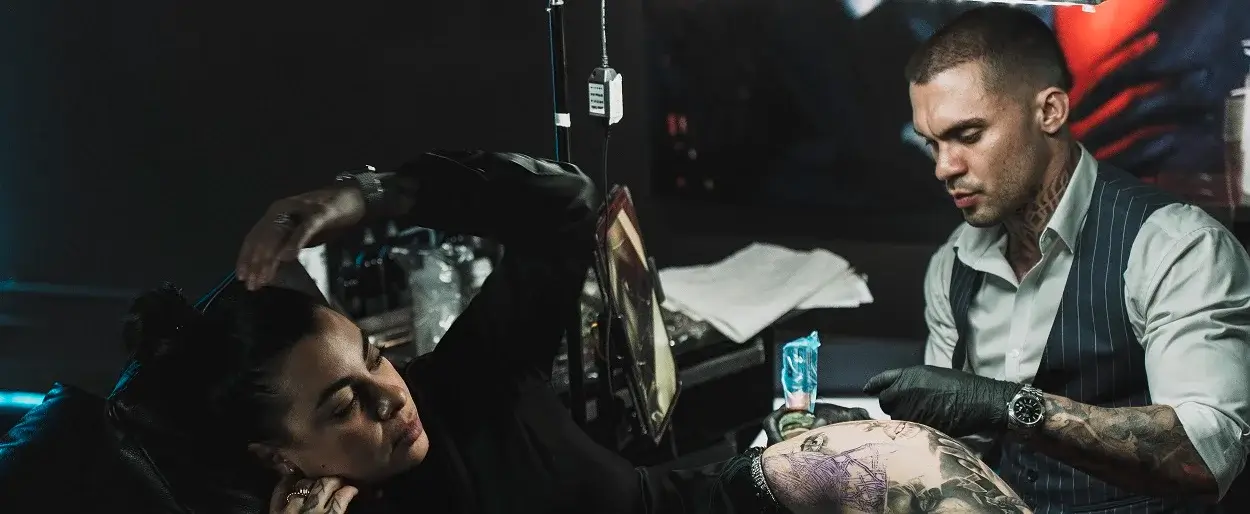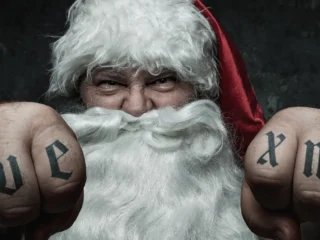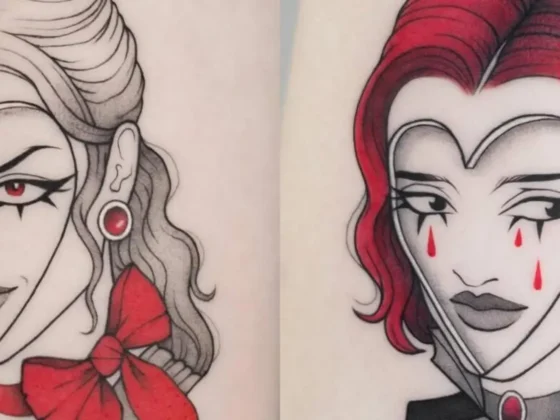Inked Mag Staff
September 8th, 2021
Bare Bones
Sandry Riffard on learning to tattoo, his fascination with skulls and learning from his healed work.
In “Hamlet,” William Shakespeare uses a skull to represent the inevitability of death and decay. In tattooing, Sandry Riffard uses a skull as a building block to create intricate and imaginative new worlds on his clients’ skin. Despite having a deep fear of death, Riffard has chosen to make skulls his speciality—incorporating them amongst grand cathedrals, slithering serpents and vibrant tropical fish. While integrating this imagery may seem daunting, for Riffard it’s all about keeping an open mind and a level head.
View this post on Instagram
How were you introduced to tattooing?
I was introduced to tattooing by chance. One day, I was paying my friend a visit and discovered him in the middle of his living room, trying to tattoo himself with a cheap machine. He knew I had a passion for art and decided to let me try. I was a little bit uncertain, but I accepted and I tattooed a little ace of spades on the side of his girlfriend’s hand. I immediately loved the feeling and felt comfortable with the machine in hand. I borrowed his equipment to practice alone and a week later he came to my apartment to find me tattooing my own arm. I continued to learn from home by tattooing my friends and acquaintances. I also learned by watching videos of Robert Hernandez and Victor Portugal, who are two great artists who inspired and helped me to progress. Then, about six months later, I opened my own tattoo shop where I still am today, eight years later.
View this post on Instagram
What appeals to you about skulls? Do you remember the first skull tattoo that you did?
I think skulls are fascinating. On one hand, we all have skulls under our skin. On the other, skulls represent my biggest fear. They represent both life and death, which is a subject that attracts me as much as I’m afraid of it.
I remember doing my very first skull, but it was a long time ago. I hadn’t even opened my shop yet and I was far from thinking that I was going to make skulls my specialty. The skull was inspired by Robert Hernandez’s style, but it was a far reach from his quality.
View this post on Instagram
Do you have any skull tattoos on your body?
Yes, just one over my chest. I started tattooing it five years ago and I still haven’t finished it.
Where do you find inspiration for your pieces? How do you go about finding references?
I find inspiration in almost everything I see and watch, I’m always thinking about new projects. Clients’ proposals also give me new food for thought, based on their tastes and wishes.
I work with a photographer, Claudine Taillandier, and we take photos of skulls for my references. Sometimes, I take my photos alone for black-and-grey projects, but I rely on her for help with color rendering. We’ve gotten used to working on and talking about projects together. I like to have a second opinion, so that the final rendering is as perfect and original as possible.
View this post on Instagram
How have you learned from your healed work over time? How do you ensure longevity?
I make a point to follow my clients throughout the healing process—which lasts about two weeks—in order to ensure everything is going well. Then I let the skin recover and one month after healing, I ask for photos and videos of the tattoo to see if we have to plan a touch-up. That’s quite rare, but it can happen because everyone’s skin is different and doesn’t heal in the same way. I also try to ask them to come back to me after a few years to make sure my work is aging well. I’ve learned with experience to distinguish different skin types and tattoo them accordingly.
What role does texture play in your work?
Texture is a major element of my work, it has the lead role. To me, this is what makes all the difference in my work. It brings everything together. Texture gives my tattoos depth and realism. It’s these imperfections and defects that literally bring the tattoo to life. I love working with bone texture, of course, but also love working with textures in skin and fabric.
View this post on Instagram
Editor's Picks
Bridging Classical Art and Modern Tattooing
Esteban Rodriguez brings the discipline of classical fine art to the living canvas of skin, creating hyper-realistic tattoos that merge technical mastery with emotional depth.
Show Your Ink Fashions Brings Custom Style to Tattoo Culture
Show Your Ink Fashions creates custom shirts designed to showcase your tattoos as wearable art, blending fashion with personal expression.
The Ultimate “Superman” Tattoo Roundup: Just in Time for Superman’s Return to Screens
With Superman’s big return to theaters, fans are revisiting some of the most iconic ink inspired by the Man of Steel.














